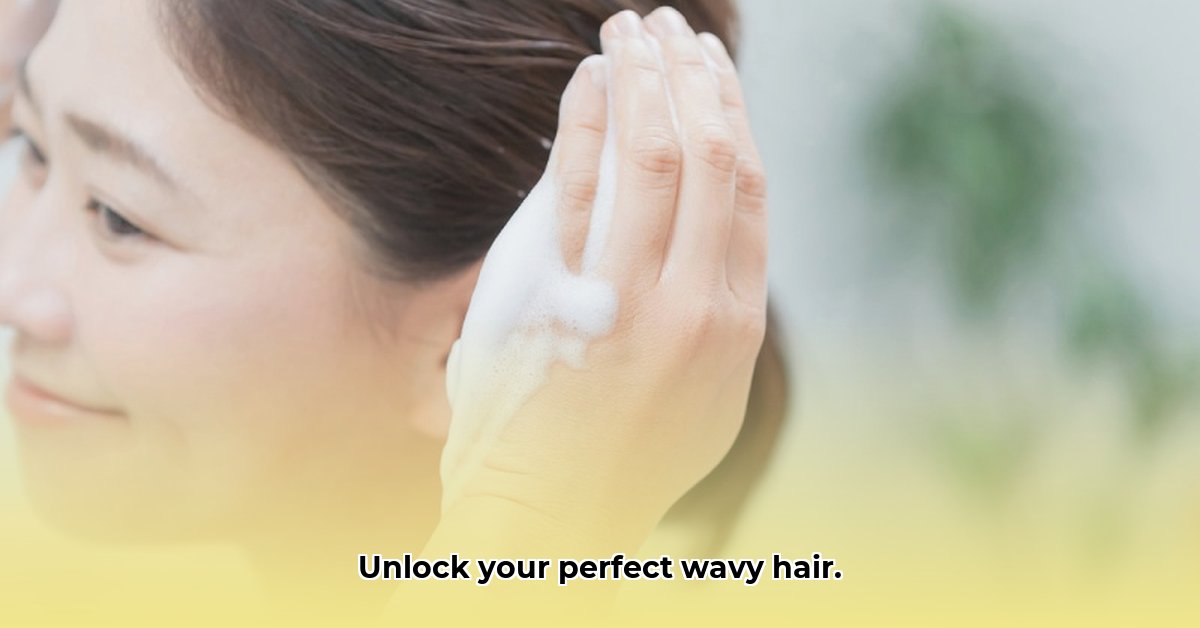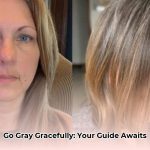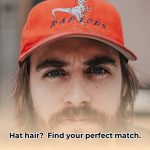Has your hair ever surprised you? One day it’s straight, the next it’s wavy! It happens more often than you think. For further hair care tips, check out this guide on choosing the right hair color. This guide will help you figure out why your hair changes texture and how to style it. We’ll cover everything from hormones and humidity to the different types of wavy hair (yes, there are several!). You’ll learn easy styling tricks like plopping and diffusing, plus find out which products will work best for you. We’ll even tackle common wavy hair problems like frizz and dryness, giving you the tools and confidence to love your hair, whatever its texture. Let’s get started on your wavy hair journey!
Hair Waviness: Understanding and Styling Your Changing Locks
Ever noticed your hair suddenly decide to be wavier than usual? Or maybe it’s gone from beachy waves to almost straight? Hair texture changes are incredibly common, and there are several reasons why your hair’s waviness might be playing hide-and-seek. Let’s unravel the mysteries behind those ever-changing strands and explore the best hair waviness solutions.
The Great Hair Waviness Mystery: What’s Going On?
Think of your hair’s texture as a reflection of your overall well-being. Several factors can influence its waviness, often working together in a complex dance.
Hormonal Shifts: The Body’s Orchestra: Hormones are like the conductor of your hair’s orchestra. Fluctuations in hormone levels, particularly during periods like pregnancy, menopause, or even just your monthly cycle, can significantly impact your hair’s texture and thickness. These changes can be dramatic, making your hair suddenly curlier, straighter, or even thicker or thinner. For example, increased estrogen levels during pregnancy can lead to fuller, wavier hair, while a drop in estrogen during menopause can result in thinner, less defined waves.
Environmental Influences: The Great Outdoors: Your environment plays a big role, too. Humidity is a major culprit – high humidity acts like a natural curling iron, adding waves or making existing waves more pronounced. Similarly, harsh sun, strong winds, and even chlorine from swimming pools can all affect your hair’s texture and waviness. Heat styling – think curling irons, straighteners, and even blow-drying – while often used to temporarily alter hair texture, can also damage the hair’s structure over time, leading to unpredictable changes in waviness. Prolonged exposure to UV rays can break down the proteins in your hair, leading to changes in elasticity and wave pattern.
Genetics: The Blueprint: Of course, your genes are a foundational element in determining your hair’s natural texture. While environmental factors and hormones can influence how your hair expresses itself, your genetic predisposition sets the stage. If your family is full of natural curls, there’s a higher likelihood of your waves appearing more prominently. Epigenetics, the study of how your behaviors and environment can cause changes that affect the way your genes work, may also play a role.
Other Factors to Consider: While the above are the primary suspects, some other factors might be at play, possibly influencing your hair’s waviness. These include: stress levels, diet, certain medications, and even age. High stress can disrupt hormone balance, impacting hair texture. Deficiencies in key nutrients like iron, zinc, and biotin can also affect hair health. Certain medications, like those for thyroid conditions or blood pressure, can sometimes alter hair texture as a side effect. As we age, our hair follicles can change, potentially leading to variations in wave pattern. Did you know that a balanced diet contributes to overall hair health and can positively influence hair texture by providing essential nutrients?
Decoding Your Waves: Identifying Your Hair Type
Knowing your hair type is the first step toward mastering your mane. Most wavy hair sits within the 2A-2C spectrum. Let’s break down what distinguishes each type:
- 2A: The Gentle Undulator: These waves are loose and subtle, often appearing more like gentle undulations rather than distinct waves. Think soft S-waves with little definition. 2A hair is typically fine and easy to straighten.
- 2B: The Defined Wave: 2B waves are more pronounced than 2A, with clearly visible bends and curves. These waves have more structure and definition. 2B hair tends to be more prone to frizz than 2A.
- 2C: The Tight Wave (Bordering on Curl): 2C hair has tight waves that resemble loose curls. This hair type often has more volume and bounciness. 2C hair is often thicker and more susceptible to frizz and dryness.
Identifying your hair type will help you choose the right products and techniques for optimal results. Remember, it is okay to fall between categories; your hair’s texture might vary based on humidity, hair styling, and other factors. You might find that you have 2B waves on the bottom layer of your hair and 2A waves closer to your face.
Taming Your Waves: Styling Techniques for Success
Now for the fun part – styling your waves! Here are a few popular techniques to help you achieve your desired look: It’s important to remember that each person’s hair is different, so experimenting is key to finding the techniques that work best for your hair.
1. The Plopping Method: This technique helps define your waves and minimize frizz.
1. Gently scrunch your freshly washed, wet hair upward, gathering it on top of your head.
2. Wrap your hair in a microfiber towel (or a soft, old cotton t-shirt) like a turban, securing it loosely under your head and letting it sit for 15-30 minutes. Avoid harsh rubbing!
3. Gently unwrap your hair and style as needed. For added definition, apply a curl-enhancing product before plopping.
2. Diffusing: The Gentle Airflow: This method provides gentle drying while defining your waves and adding volume.
1. Apply a curl cream or mousse to your damp hair. Scrunch gently to distribute the product evenly.
2. Use a diffuser attachment on your hairdryer. Hold the diffuser close to your hair, cupping sections gently to avoid disturbing the natural wave pattern.
3. Slowly move the diffuser, ensuring even drying and minimizing heat damage. Use a low heat setting to further minimize damage.
3. The Air-Dry Embrace: One of the easiest ways to let your natural waves shine while minimizing heat damage.
1. Apply a lightweight leave-in conditioner, curl cream, or gel to your wet hair.
2. Gently scrunch your hair upwards to encourage curl formation.
3. Let your hair air dry completely. Avoid touching your hair while it's drying to minimize frizz.
4. Braiding for Waves: A heat-free way to create defined waves overnight.
1. On damp hair, apply a curl-defining product.
2. Braid your hair in one or two braids, depending on the desired wave pattern.
3. Secure the ends of the braids and sleep with them overnight.
4. In the morning, gently unbraid your hair and style as desired.
Product Power-Ups: The Right Tools for the Job
Your product choices can make or break your wavy hairstyle. Here’s a breakdown of essential products for wavy hair and examples of what you might look for:
| Product Type | Purpose | Potential Benefits | Recommended Ingredients |
|---|---|---|---|
| Moisturizing Shampoo | Cleanses without stripping hair of natural oils | Keeps hair hydrated and prevents dryness | Shea butter, coconut oil, aloe vera |
| Deep Conditioner | Adds intense moisture and strengthens hair | Improves elasticity and reduces breakage | Argan oil, keratin, avocado oil |
| Leave-in Conditioner | Provides ongoing hydration and detangling | Makes hair easier to manage and reduces frizz | Panthenol (vitamin B5), glycerin, silk amino acids |
| Curl Cream/Mousse | Defines curls, boosts volume, and tames frizz | Enhances natural wave patterns and adds texture | Plant-based extracts, lightweight polymers, essential oils |
| Hair Oil | Adds shine, tames frizz, and improves manageability | Adds hydration, softens hair and increases shine | Argan oil, jojoba oil, grapeseed oil |
| Texturizing Spray | Enhances waves and adds volume | Creates a beachy, tousled look | Sea salt, magnesium sulfate, seaweed extract |
Remember, the best products will depend on your specific hair type and needs. Experiment to find what works best for you. Look for products that are sulfate-free, paraben-free, and silicone-free to minimize damage and buildup.
Troubleshooting Troublesome Waves: Addressing Common Issues
Even with the best intentions, wavy hair can sometimes throw curveballs. Let’s tackle some common challenges: It’s worth noting that genetics also plays a significant role in addressing common issues such as frizz.
Frizz: Frizz happens, especially in humid weather. Try using anti-frizz serums or oils. Avoid over-manipulating your wet hair and consider using a satin pillowcase
- Wellness Fair Ideas for Work to Boost Employee Wellbeing - December 15, 2025
- Affordable Employee Wellness Fair Ideas for Any Budget - December 14, 2025
- Employee Wellness Programs Strategically Benefit Employee Health And Retention - December 13, 2025
















